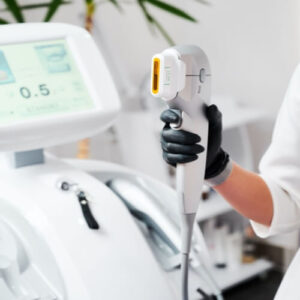Naltrexone
What is Naltrexone?
Naltrexone is an approved medication for the treatment of opioid use disorder (OUD) and alcohol use disorder (AUD).
Its mechanism of action is to neutralize the receptors that opioids bind to, which reduces cravings.
Uses of naltrexone
The Food and Drug Administration (FDA) has approved the use of naltrexone after consultation with a physician for the following conditions:
- Treatment of alcohol dependence (alcohol use disorder) in which the patient must stop drinking alcohol before and during the use of the drug.
- Treatment of opioid use disorder (OUD) The patient must stop taking opioids at least 7 to 10 days before starting treatment.
Side Effects
Taking any medication can have certain side effects. The most common side effects of naltrexone in case of alcoholism include:
- nausea or vomiting
- diarrhea
- Abdominal pain
- Injection site reactions (redness of the skin or pain at the injection site)
- Muscle spasm
- dizziness
- Feel sleepy
- Lack of appetite
- worry
- joint pain or stiffness
- Headache
There are some side effects when taking naltrexone to treat opioid dependence:
- Pain at the injection site
- toothache
- Insomnia
- cold
- Headache
- high blood pressure
Most of these side effects may disappear within a few days to two weeks, but if they persist or increase in severity, you should contact your doctor.
In addition to the above, there are some serious side effects that result from the use of naltrexone, and when exposed to any of them, the doctor should be consulted immediately, and they include:
Serious side effects and their symptoms can include:
| Side Effects | symptoms |
| Opioid withdrawal (opioid withdrawal may only occur if the patient has recently taken opioid medications) | Nausea and vomiting diarrhea – rapid heartbeat – Hypertension – Insomnia – worry – muscle pain – Sweaty |
| Liver disorders such as hepatitis (swelling of the liver) or changes in liver function tests | Abdominal pain that lasts more than a few days yellow eyes – Exhaustion Change in urine color (dark urine) |
| Reactions at the injection site | A hard lump at the injection site – Sharp pain – Try |
| Pneumonia | – Heat – Chest pain – Breathing problems |
| Depression and suicidal thoughts | feeling hopeless – Feeling sad Lack of desire for anything Sleep Disorders Feeling angry or more aggressive than usual The patient thinks more and more about hurting himself |
Drug interactions
The doctor or pharmacist must be informed of all medications taken before starting treatment with naltrexone in order to avoid any drug interactions. The most prominent drugs that are recommended not to take are:
| medicine | medicinal efficacy |
| Tramadol | Opioid pain reliever |
| Alprazolam | A popular anti-anxiety drug |
| Adderall | Medications used to treat attention deficit hyperactivity disorder (ADHD) |
Pharmacological forms of Naltrexone
The most important pharmacological forms of naltrexone include:
| Pharmacological form | Doses are available |
| Tablets | 50 mg |
| rights | 380 mg |
Recommended dosage
Naltrexone should be taken in prescribed doses, according to the doctor’s recommendations. The dose for adults is as follows:
| A pathological case | Recommended dosage |
| Opioid Abuse (OUD) | 25 mg orally initially, then monitored for 1 hour, then 50 mg once daily starting on the second day, or 380 mg intramuscularly every 4 weeks. |
| alcohol use disorder (AUD) | The dose is 50 mg once a day for 12 weeks or 380 mg as an injection into the gluteal muscle every 4 weeks. |
Contraindications to the use of naltrexone
There are several cases in which the use of naltrexone is not indicated, the most prominent of which are:
- The presence of any allergic reactions to any of the components of the drug
- Has kidney disorders
- The patient suffers from eating disorders such as lack of appetite
- in case of pregnancy
- It should not be given to children, as its effectiveness and safety have not been proven for the age group below 18 years.
Instructions for use
There are some guidelines to consider when using naltrexone, mainly:
- Naltrexone should not be taken if the patient is allergic to one of the components of the drug
- Follow the doctor’s instructions and the recommended doses
- The patient must tell the doctor if he suffers from diabetes and vascular problems in addition to pressure problems
Naltrexone alternatives
There are several medications that are good alternatives to naltrexone, including:
1- Alternatives to alcohol addiction
- Accomfrost
- Disulfiram
- Topiramate (Topamax)
- Neurontin
2- Alternatives to opioid addiction
- Naloxone/buprenorphine (Suboxone, Zobsolv)
- Buprenorphine (Soblocaid, Probufen)
- methadone (dolophane)
- Naltrexone tablets
Common questions
1- Does naltrexone affect blood sugar levels?
Naltrexone affects the blood sugar level, so blood sugar levels must be constantly monitored while taking the drug.
2- Does naltrexone affect blood pressure?
Naltrexone affects pressure, it may cause high blood pressure and an increase in heart rate.
3- Does naltrexone help you lose weight?
The US Food and Drug Administration has not approved the use of naltrexone for weight loss, but it is sometimes used in combination with another weight loss drug called bupropion, as it helps reduce food cravings.
4- Is naltrexone addictive?
Naltrexone is non-addictive and can be discontinued after completing the dosages recommended by your doctor.
5- Can naltrexone be used to treat an opioid overdose?
Naltrexone is not taken to treat an opioid overdose. It works slowly to help stop opioid cravings but lasts a long time in the body. In the case of an opioid overdose, a quick remedy should be used.
Therefore, naltrexone is not a good option for treating an overdose because it does not work quickly enough to stop the overdose.
6- Is naltrexone an opiate?
Naltrexone is non-opioid, non-addictive and does not cause withdrawal symptoms upon cessation of use.
sources
- https://www.medicalnewstoday.com/articles/326499
- https://www.ncbi.nlm.nih.gov/pmc/articles/PMC6358483/
- https://reference.medscape.com/drug/vivitrol-revia-naltrexone-343333
- https://www.drugs.com/naltrexone.htm





